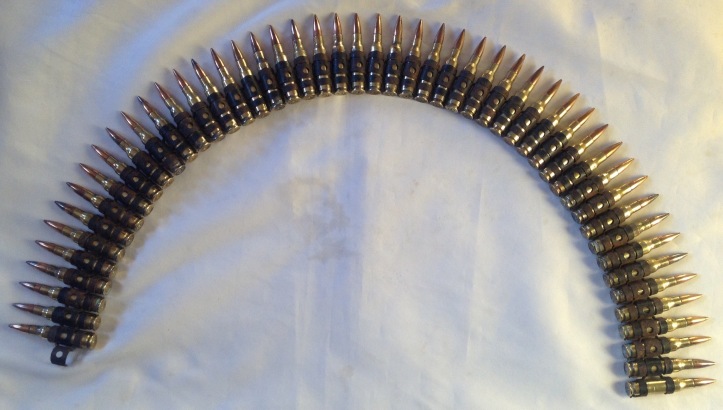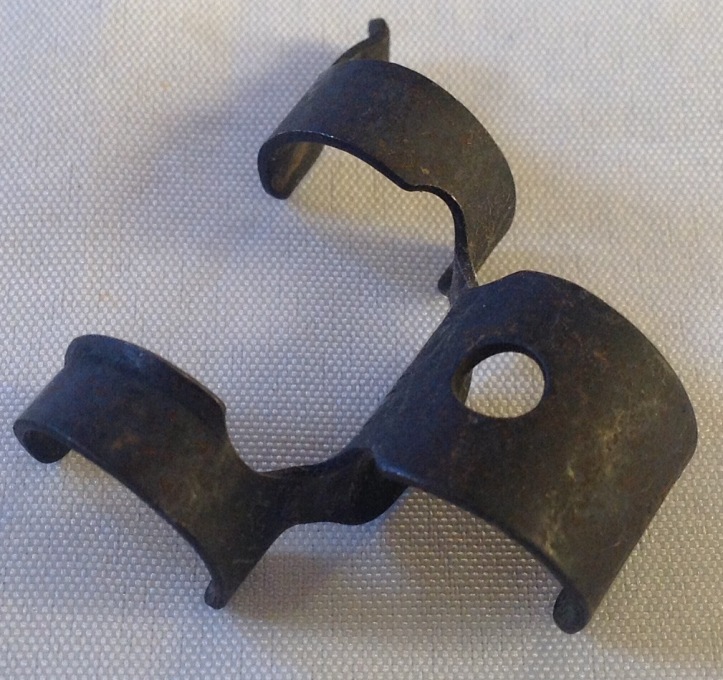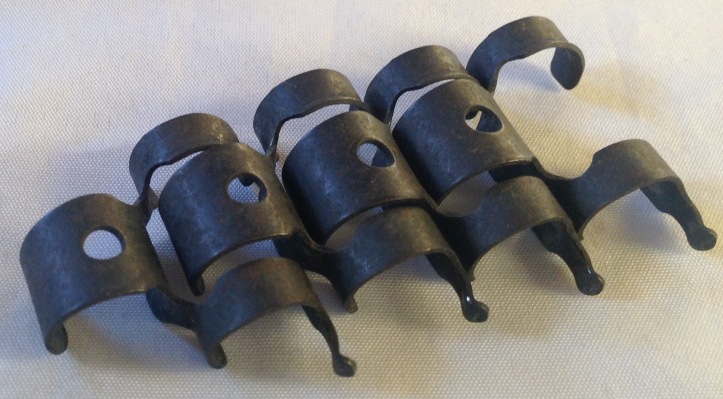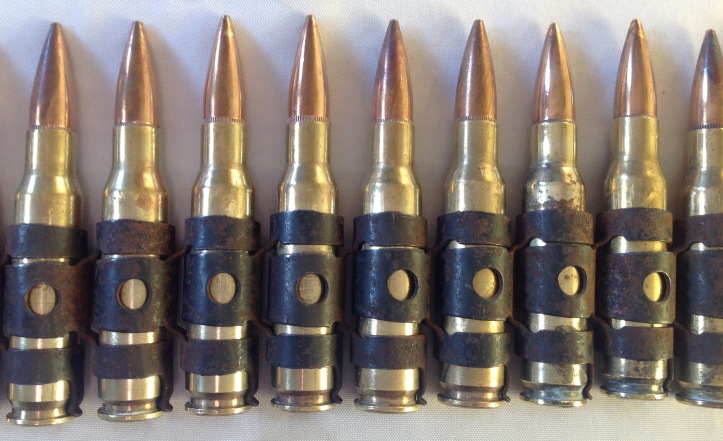For many decades the General Purpose Machine Gun, or GPMG, has been the main infantry support weapon for the British Army. This machine gun fires 7.62mm NATO standard ammunition from metal linked belts. We have previously looked at the manufacture of the 7.62 ball round itself here and the corresponding blank rounds here. Tonight however we have two sets of belted ammunition to look at, firstly a fifty round ball belt (inert rounds): And a belt of blank ammunition:
And a belt of blank ammunition: Ammunition for both belts is held together with small stamped metal spring clips:
Ammunition for both belts is held together with small stamped metal spring clips: These interlock with each other:
These interlock with each other: The casings of the rounds themselves hold each together with its neighbour:
The casings of the rounds themselves hold each together with its neighbour: The action of the GPMG draws each round out in turn to fire and as each is pulled out a link falls free, disintegrating the belt into its constituent parts.
The action of the GPMG draws each round out in turn to fire and as each is pulled out a link falls free, disintegrating the belt into its constituent parts.
The GPMG manual describes the issuing of links as:
Ammunition is supplied in belts of 200, the belts are of metal disintegrating links and can be readily broken or joined to give belts of any length. Belts may be issued as follows, four ball and one tracer (4B/1T), this is the standard issue, one tracer to one ball (1B/1T), normally used in the turret mounted role, and finally belts of all ball ammunition for use when tracer is forbidden, i.e., on the 30 metre range.
To Separate a Belt. Hold the rounds on each side of the point at which it is desired to separate the belt, twist them in opposite directions. The links at that point will become disengaged.
To Join Two Belts. Fit the projection of the end link of one belt into the gap of the end link of the other, making sure that the links are the same way up. If there is a round in position, press the projection so that it snaps into place over the cartridge case. If no round is in position, insert one as described later in this paragraph.
The links are only to be re-used with drill and inspection rounds (used by REME). The only exception to this rule is in battle and then only in an emergency.
The pamphlet advises that if drill belts need to be assembled the following method should be observed:
To Make Up a Belt. Take two links, both the same way up, and place them so that the projection of one fits into the gap of the other (see Fig 10 a). Then (in the manner shown in Fig 10 b), interlock them by inserting the nose of a round through both links and press the round for- ward till the projecting detent of the clip clicks into place in the groove at the base of the round. Connect further links and rounds in the same way.
[…] 7.62mm GPMG ammunition belt was covered on the blog last month here. These belts were provided in a number of different forms of packaging, but the tradition metal […]